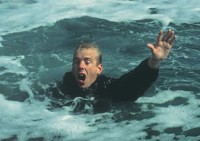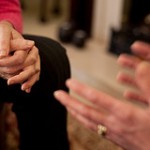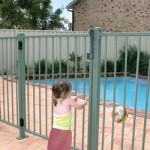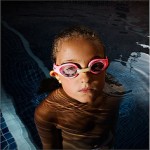On 24 January The Samuel Morris Foundation appeared on Channel 10’s “The Project” to discuss what drowning really looks like.
[youtube AzcJ1oH9Exw]
WHAT DO YOU THINK DROWNING LOOKS LIKE?
Many people have a view of what drowning looks like that is based on the portrayal of drowning in movies…..
You probably think it looks like someone waving frantically, yelling….. BUT it does not….. a person doing these actions may well be in distress, but they are not yet “drowning” as such, and will be able to assist in their own rescue if they are thrown floatation devices, life lines etc.
UNDERSTANDING THE INSTINCTIVE DROWNING RESPONSE
Dr Frank Pia described the “instinctive drowning response” a set of behaviours and actions that drowning people will display.
Except in rare circumstances, drowning people are physiologically unable to call out for help. The respiratory system was designed for breathing. Speech is the secondary or overlaid function. Breathing must be fulfilled, before speech occurs.
Drowning people’s mouths alternately sink below and reappear above the surface of the water. The mouths of drowning people are not above the surface of the water long enough for them to exhale, inhale, and call out for help. When the drowning people’s mouths are above the surface, they exhale and inhale quickly as their mouths start to sink below the surface of the water.
Drowning people cannot wave for help. Nature instinctively forces them to extend their arms laterally and press down on the water’s surface. Pressing down on the surface of the water, permits drowning people to leverage their bodies so they can lift their mouths out of the water to breathe.
Throughout the Instinctive Drowning Response, drowning people cannot voluntarily control their arm movements. Physiologically, drowning people who are struggling on the surface of the water cannot stop drowning and perform voluntary movements such as waving for help, moving toward a rescuer, or reaching out for a piece of rescue equipment.
From beginning to end of the Instinctive Drowning Response people’s bodies remain upright in the water, with no evidence of a supporting kick. Unless rescued by a trained lifeguard, these drowning people can only struggle on the surface of the water from 20 to 60 seconds before submersion occurs.
(Source: On Scene Magazine: Fall 2006 (page 14))
LEARN WHAT TO LOOK FOR….
This classic piece of film captured by Dr Francesco Pia during his research you can see a child performing the instinctive drowning response. (the clip starts at 38 seconds in and is narrated by Dr Pia.
[youtube 00Iks81-ZV4]
This youtube clip shows what to look for in greater detail… pay attention, what you learn could help you make the difference between life, disability or death…….
[youtube 9fyvtNewabM]
YOU HAVE LESS THAN ONE MINUTE……
It is vitally important to realise just how quickly this process occurs… as Dr Pia mentions this whole process lasts between 20 and 60 seconds… and in young children will not be as pronounced as in adults.
In 20 seconds the person could be underwater, inhaling water into their lungs and beginning to suffer an oxygen deficit which if they are quickly rescued may result in an hypoxic brain injury and life long complications or death… and if not quickly rescued certain DEATH.
KNOW YOU KNOW WHAT IT REALLY LOOKS LIKE…
You can follow all of the recommended safety rules to help prevent getting into this scenario:
- Always supervise children on, in and around the water
- Make sure swimming pool barriers are in good working order and gates always self close and are NEVER propped open.
- At parties, assign an adult to be the designated supervisor or kids in and around water, rotate the role every 15 minutes to stay fresh and focused.
- NEVER swim alone
- Always wear a PFD when boating, kayaking or rock fishing





Very sad at Sammy’s passing. Very grateful for the privilege of caring for Sammy in hospital. My heartfelt sympathy to Michael, Jo and all the family. Sammy is now playing with the angels. God bless. ox